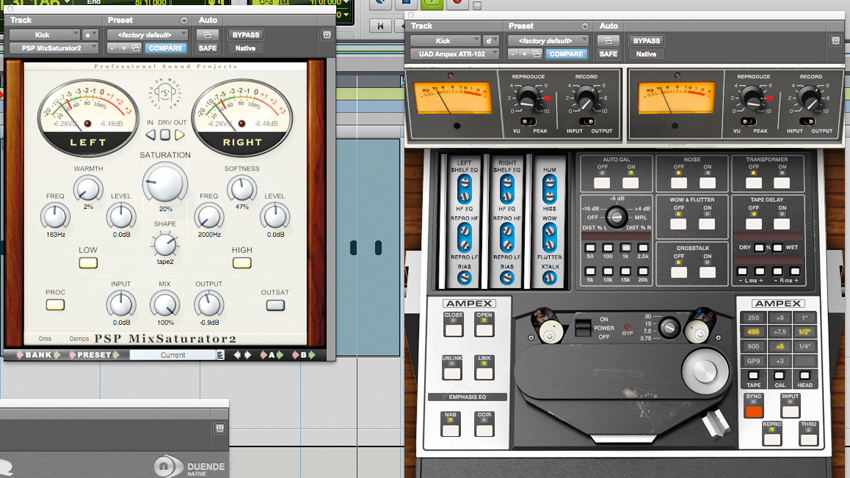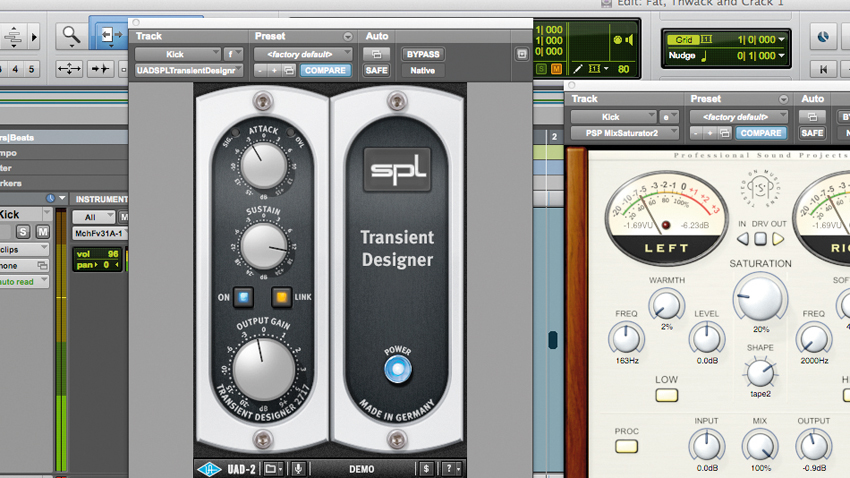Creating the fattest kick
Get the kick right from front to finish
Kicks vary more than snares, particularly in Dance music, and quite often the kick sound is the most important of all.
As a beginner, it's very easy to focus on the click or very front of the kick drum sound, leaving you with a kick that cuts through a mix but has no weight, punch or power. The front is just a part of the equation and the tail of the sound, which has the low frequency content, is just as important.
Compression settings are much the same as for the snare drum tutorial and the aim is for a tougher sound. Unless you're using a compressor with a high-pass filter in the sidechain, it will suck out some of the low frequencies - we use an EQ to put shape back to the bottom end.

1. We're using the classic Urei 1176 again. The attack can be a bit faster than for the snare and the releasetime fastest. If the decay is long enough you can work the release time to the rhythm of the track so the tail rises up to meet the off-beat.

2. A surgical EQ from SSL to shape the bottom-end. Narrow Q boosts at 70Hz to rattle the lower abdominalareas and at 120Hz for harder low frequencies to come through on smaller systems. A 40Hz high pass filter also tightens but keeps the weight and saves headroom.

3. This kick has a very clicky front to it that will cut in the mix but can sound nasty at low levels. Tape simulatorscan help to soften and glue it in. This UAD Ampex simulator is superb, as is the PSP, which is also adding a touch of warmth.

4. If you want to exaggerate the front attack or the decay even more, a transient designer does the trick. Herewe're upping the decay, which works down the very bottom end, and lessening the click which might not be appropriate as the track gets busier.
Want all the hottest music and gear news, reviews, deals, features and more, direct to your inbox? Sign up here.

5. A useful trick, particularly for tracks without a bassline - Hip Hop for example. Adding a gated tone triggered by the kick creates a long decay which can be in key with the track. Start by creating an auxiliary track andinserting a signal generator plug-in set to sine wave.

6. Insert a gate and send the kick from a pre-fade aux to the sidechain input. Set the tone to the root note, herea low C is approx 65Hz, and with a severe gate and fast attack set the hold and release to shape a tail.
Audio examples embedded above on Soundcloud
Future Music is the number one magazine for today's producers. Packed with technique and technology we'll help you make great new music. All-access artist interviews, in-depth gear reviews, essential production tutorials and much more. Every marvellous monthly edition features reliable reviews of the latest and greatest hardware and software technology and techniques, unparalleled advice, in-depth interviews, sensational free samples and so much more to improve the experience and outcome of your music-making.
